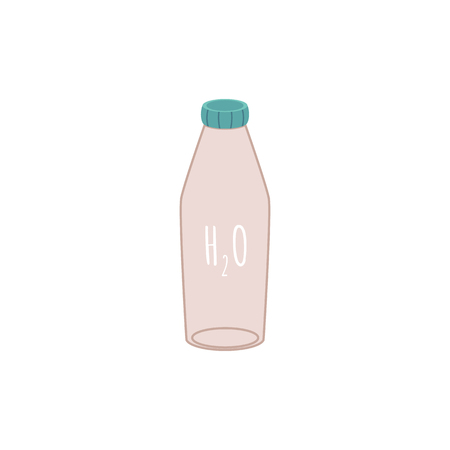Introduction to Subscription Beauty Boxes in the UK
In recent years, the subscription beauty box phenomenon has swept across Britain, captivating consumers with its blend of convenience, surprise, and curated personal care. These monthly or quarterly boxes, packed with grooming essentials, skincare heroes, and the latest in men’s and women’s beauty trends, have become a staple on bathroom shelves up and down the country. British consumers are drawn to the excitement of unboxing new products tailored to their preferences, all delivered straight to their doorsteps. As this market continues to flourish—fuelled by social media buzz and a growing interest in self-care—subscription beauty boxes are now firmly embedded within the UK’s grooming and cosmetic culture. This surge in popularity is not just about indulgence; it reflects a shift towards personalised experiences that align with evolving lifestyles and values.
2. The Environmental Impact of Traditional Packaging
When it comes to beauty subscription boxes in Britain, the excitement of unboxing often comes with an unfortunate side effect: excessive packaging waste. Historically, these curated parcels have been wrapped in layers of plastic film, bubble wrap, polystyrene fillers, and glossy cardboard—all designed to protect delicate grooming products and create a premium feel. However, this approach has led to significant environmental challenges across the UK.
Waste Generation from Traditional Beauty Boxes
With thousands of boxes dispatched each month, the cumulative impact is considerable. Much of the packaging is single-use and not easily recyclable, contributing to landfill build-up and pollution. Below is a comparison of common packaging materials used in traditional beauty subscription boxes and their typical environmental consequences:
| Packaging Material | Common Use | Environmental Impact |
|---|---|---|
| Plastic Film & Bubble Wrap | Protecting fragile items | Non-biodegradable; persists for centuries in landfill |
| Polystyrene Fillers | Cushioning products | Difficult to recycle; pollutes waterways if not disposed of correctly |
| Laminated Cardboard | Box exteriors for branding | Often unrecyclable due to coatings; contributes to unnecessary waste |
| Single-use Tissue Paper | Wrapping individual items | Rarely reused or recycled; adds to general waste volume |
The Broader Challenge in the UK Context
According to recent government statistics, packaging waste remains one of the fastest-growing categories in British households. The beauty industry—particularly through monthly subscription services—plays its part in this ongoing issue. In addition, local councils often struggle with sorting mixed-material packaging, resulting in otherwise recyclable materials being sent directly to landfill.
Consumer Expectations vs Sustainability Goals
The British market values both luxury presentation and eco-consciousness. Traditionally, brands have prioritised aesthetics and customer experience, sometimes at the expense of sustainability. This tension has prompted a re-evaluation of how beauty boxes are packed and delivered throughout the UK.
Towards Responsible Packaging Practices
The mounting pressure from environmentally-aware consumers and regulatory bodies is now pushing brands to reconsider their packaging strategies. As we look ahead, the shift towards sustainable solutions is reshaping not only how these boxes look but also their entire lifecycle—from production to disposal.

3. Innovative Sustainable Packaging Materials
Subscription beauty boxes in Britain are stepping up their game by embracing a range of eco-friendly packaging materials that reflect both modern aesthetics and environmental consciousness. One of the most popular choices is recycled cardboard, which not only offers sturdy protection for products but also reduces the demand for virgin paper and lowers carbon emissions. Brands are opting for cardboard sourced from responsibly managed forests and printed with vegetable-based inks, making the entire experience greener from start to finish.
Biodegradable wraps are also gaining traction in the UK’s beauty box scene. Unlike conventional plastics that linger in landfills, these wraps break down naturally over time, leaving minimal impact on the environment. Made from plant-based materials such as cornstarch or cellulose, biodegradable options ensure that both the look and function of packaging remain top-notch while staying kind to the planet.
Another impressive innovation is the use of reusable containers. Many British subscription services are introducing tins, glass jars, or fabric pouches designed for multiple uses—encouraging subscribers to repurpose them around the home or when travelling. This approach not only cuts down on waste but also adds a touch of practicality and sophistication to the unboxing ritual. By adopting these sustainable materials, UK beauty box brands are setting new standards for responsible grooming and self-care, proving that style and sustainability can go hand in hand.
4. Brands Leading the Way in Green Packaging
Across Britain, several subscription beauty box brands are stepping up as pioneers in sustainable packaging, setting new standards for the industry. These brands are not only minimising their environmental impact but also influencing consumer behaviour and industry peers through their innovative approaches.
Trailblazing British Brands
From using recycled materials to developing fully compostable solutions, leading UK-based beauty box companies are making waves. For instance, Birchbox UK has committed to utilising 100% recyclable boxes and soy-based inks, while Lookfantastic Beauty Box has moved towards FSC-certified cardboard and water-based adhesives. Meanwhile, Glossybox UK invests in biodegradable packing chips and encourages box reuse for storage or gifting.
Innovative Packaging Solutions at a Glance
| Brand | Sustainable Packaging Initiative |
|---|---|
| Birchbox UK | 100% recyclable boxes, soy inks, minimal plastic use |
| Lookfantastic Beauty Box | FSC-certified cardboard, water-based adhesives, reduced packaging size |
| Glossybox UK | Biodegradable packing chips, reusable boxes, paper tape |
The Impact on the British Beauty Scene
The collective effort of these brands is shifting the landscape of subscription beauty in Britain. Not only do these initiatives reduce landfill waste and carbon emissions, but they also set a benchmark for transparency and responsibility within the sector. As more British consumers seek eco-friendly alternatives, these brands are proving that style and sustainability can go hand in hand, cementing their reputation as industry leaders in green innovation.
5. The Role of Consumers and Public Pressure
British consumers are increasingly aware of the environmental impact associated with beauty packaging, and their evolving expectations have become a driving force for change within the subscription beauty box sector. Today, shoppers across the UK are more likely to scrutinise packaging materials, questioning whether brands use recyclable, biodegradable, or compostable options. This heightened eco-consciousness means that brands can no longer rely solely on stylish presentation; they must also demonstrate genuine commitment to sustainability.
The influence of British consumers is further amplified by widespread public campaigns and media coverage highlighting plastic pollution and landfill waste. Social media movements such as #PlasticFreeJuly and initiatives led by local councils have empowered individuals to demand greener solutions from their favourite brands. As a result, many customers now actively seek out subscription boxes that prioritise minimal packaging, reusable containers, or refillable options—often sharing their unboxing experiences and eco-friendly finds online for greater visibility.
This growing demand has led to tangible changes in how beauty subscription companies operate. Brands are consulting directly with their subscribers through surveys and feedback forms to better understand preferences around sustainable packaging. They’re also responding to calls for transparency, providing details on sourcing and disposal instructions for each component of their boxes. In turn, this collaborative approach helps create a community-driven push towards more responsible practices throughout the industry.
Ultimately, it’s clear that British shoppers aren’t just passive recipients—they’re proactive participants shaping the future of sustainable packaging in beauty subscriptions. Their voices carry weight, compelling brands to innovate and adapt in order to maintain loyalty and attract new customers who share similar values. With consumer power at its peak, there’s every reason to believe that the trend towards greener packaging will only gather momentum in the years ahead.
6. Challenges and Future Outlook
While the transition to sustainable packaging in Britain’s subscription beauty box industry is gaining momentum, several challenges remain. One of the primary hurdles is balancing cost-effectiveness with eco-friendly materials. Sustainable alternatives like biodegradable plastics and recycled cardboard can be more expensive than conventional packaging, putting pressure on both brands and consumers. Additionally, ensuring that packaging is not only recyclable but also easily processed by local UK recycling facilities presents another layer of complexity.
Another issue is consumer education. Many subscribers are still unaware of the nuances between compostable, recyclable, and reusable materials. Without clear guidance, even the most thoughtfully designed sustainable packaging may end up in landfill due to improper disposal. Brands must invest in clear labelling and communication to help customers make environmentally sound choices.
Looking ahead, innovation will continue to shape the future of sustainable packaging in the UK beauty subscription sector. The rise of new materials—such as mushroom-based packaging or seaweed films—offers hope for reducing environmental impact further. Collaborations with British universities and start-ups may accelerate breakthroughs in both packaging design and waste management solutions.
Legislation is also evolving. As the UK government tightens regulations around single-use plastics and packaging waste, beauty box brands will need to stay agile to remain compliant. This could drive greater standardisation across the industry and foster broader adoption of closed-loop recycling schemes.
Ultimately, while significant obstacles exist, the outlook is optimistic. With continued investment in research, robust partnerships across the supply chain, and an engaged consumer base increasingly demanding greener options, Britain’s subscription beauty boxes are poised to set new standards for sustainability—making it easier for men across the country to look sharp while caring for the planet.

